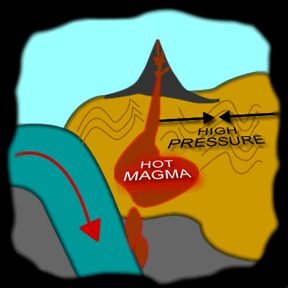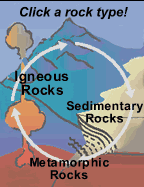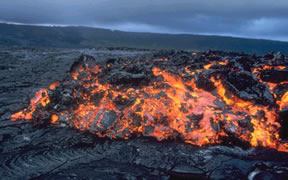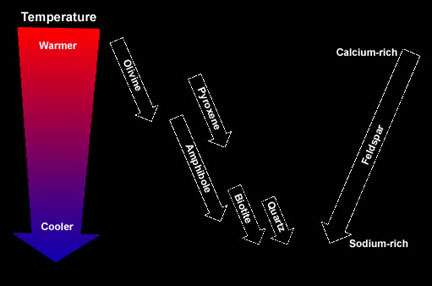
L.Gardiner/Windows Original
Metamorphic Rocks
Perhaps you have heard about how caterpillars metamorphose into butterflies. Well, rocks can metamorphose too! Metamorphism means changed form. When conditions such as heat or pressure change, rocks change into metamorphic rocks. Igneous and sedimentary rocks can be remade into metamorphic rocks. Even metamorphic rocks can be metamorphosed again, becoming a new type of metamorphic rock.
Environments with heat and pressure that causes metamorphism are often found where the Earth's tectonic plates are coming together. There, the colliding plates squish rocks, and pools of magma heat them deep underground. The rocks are changed either in small areas of contact metamorphism or large areas of regional metamorphism.
When a rock is metamorphosed, its mineral crystals change. Usually, the same chemical ingredients are used to form new crystals during metamorphism. Some new types of minerals, such as mica and garnet, can form depending on the amount of metamorphism.
Often, flat minerals like mica become lined up perpendicular (at a right angle) to the direction of pressure. When minerals within a metamorphic rock are organized this way, it is called foliation. Some metamorphic rocks are foliated and others are non-foliated.
Figure out foliation!
Try this experiment to figure out how minerals become oriented when a rock is under pressure.
- Add mica flakes to a piece of play dough. The dough will represent a rock undergoing metamorphism.
- Knead the dough until the mica flakes are well-incorporated roll your dough into a ball.
- Break the ball of dough in half. The flakes will be oriented in all different directions just as they would be in an unmetamorphised rock.
- Take one half of the ball and flatten it with the palm of your hand. The pressure that you are applying to the dough is like the pressure placed on our rocky Earth by the forces of plate tectonics.
- Break the flattened dough in half and look at what has happened to the mica flakes!














